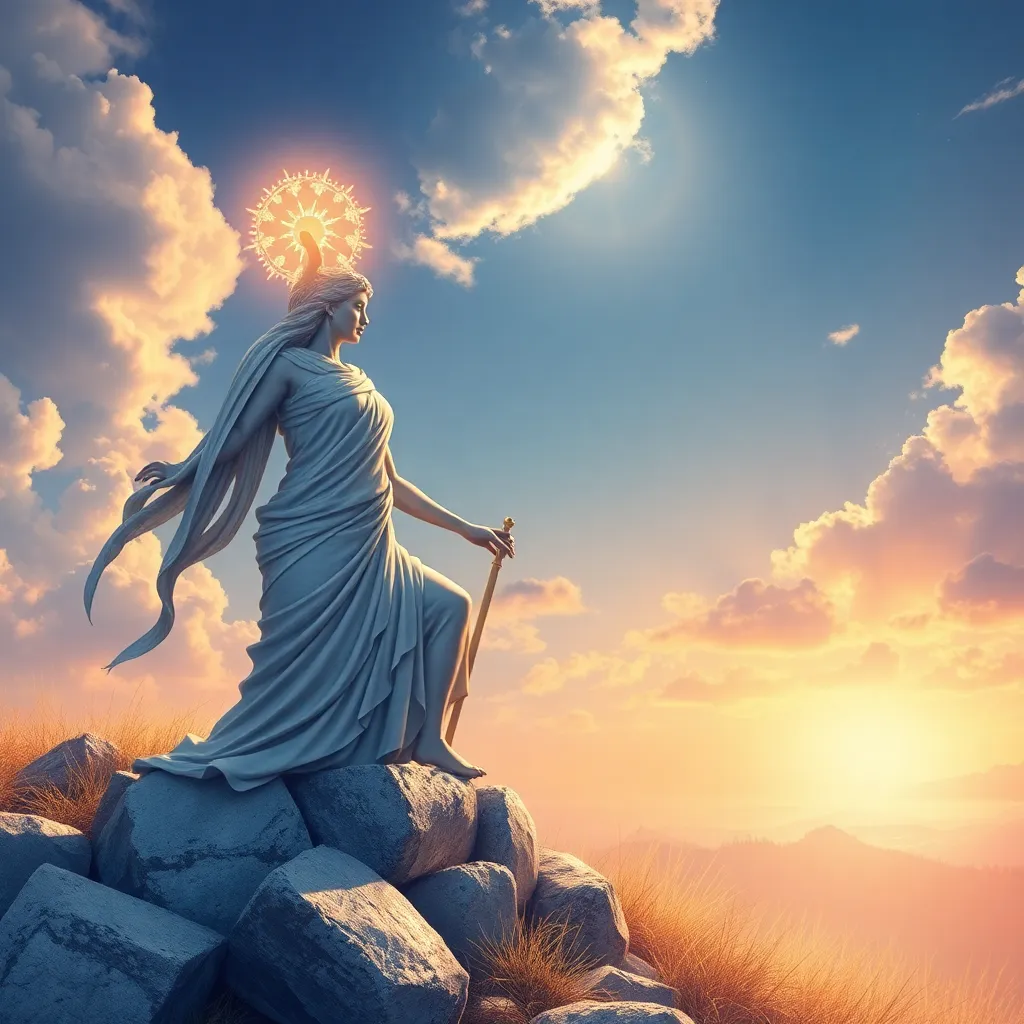Hera’s Connection to the Seasons: Myths and Symbolism
I. Introduction
In Greek mythology, Hera is one of the most prominent deities, revered as the queen of the gods and the goddess of marriage and family. Her stories are interwoven with themes of fidelity, power, and jealousy, reflecting the complexities of relationships and the importance of family in ancient Greek culture. The seasons, in turn, held great significance for the Greeks, influencing their agricultural practices, festivals, and daily lives.
This article aims to explore the intricate connection between Hera and the seasons, delving into the myths and symbolism that define her character and her role in the cyclical nature of life in ancient Greece.
II. Hera: The Queen of the Gods
Hera, daughter of the Titans Cronus and Rhea, is often depicted as a majestic figure who embodies the ideals of womanhood and marital fidelity. As the wife of Zeus, the king of the gods, she plays a central role in the pantheon, often depicted with symbols such as the peacock and the pomegranate, which represent beauty and fertility, respectively.
Her relationship with Zeus is both tumultuous and complex; while she often faces his infidelities, Hera is also seen as a powerful protector of women and marriage. Her role as a goddess of marriage and family highlights her importance in Greek culture, where familial bonds were paramount.
III. Seasonal Cycles in Greek Mythology
The agricultural calendar was crucial to ancient Greek society, dictating the rhythms of planting, harvesting, and celebrating. The change of seasons was associated with various deities and myths that explained the natural world and its cycles.
Many Greek myths reflect the interrelation of deities and nature, showcasing how the changing seasons were often linked to the actions and emotions of the gods. Some key seasonal myths include:
- The story of Demeter and Persephone, which explains the cycle of growth and dormancy.
- Hades’ abduction of Persephone, leading to the changing of seasons.
- The various festivals celebrating the harvest and the new year.
IV. Hera and the Seasons: Mythological Narratives
One of the most significant seasonal myths involving Hera is the story of Demeter and her daughter Persephone. This myth encapsulates themes of fertility, loss, and renewal, with Hera playing a vital role in the narrative.
A. The myth of Demeter and Persephone
Demeter, the goddess of the harvest, is devastated when her daughter Persephone is taken by Hades to the underworld. In her grief, she neglects the earth, causing a barren winter. Hera, as the queen of the gods, provides support to Demeter during this tragic time, emphasizing her role as a motherly figure.
1. Connection to fertility and the harvest
When Persephone returns from the underworld, spring emerges, symbolizing renewal and growth. Hera’s involvement in this myth highlights her connection to the cycles of fertility and the agricultural seasons.
B. Seasonal transformations related to Hera
Hera’s influence can also be seen through the transformations associated with each season:
- Spring: Represents renewal and growth, symbolizing hope and new beginnings.
- Summer: Embodies abundance and celebration, reflecting the joy of the harvest.
- Autumn: A time for harvest and reflection, where the fruits of labor are gathered.
- Winter: Signifies dormancy and rebirth, representing a time for contemplation and preparation for the new cycle.
V. Symbolism of Hera in Seasonal Changes
Hera’s symbolism can be intricately linked to the qualities of each season:
- Spring: A symbol of rejuvenation and love, aligning with Hera’s role as the goddess of marriage.
- Summer: Represents strength and loyalty, showcasing Hera’s steadfastness in her relationships.
- Autumn: Reflects wisdom and transition, as families come together to celebrate their harvest.
- Winter: A time of contemplation and rebirth, echoing Hera’s enduring influence through challenges.
VI. Hera’s Festivals and Their Seasonal Significance
Hera was honored through various festivals, the most notable being the Heraea, which celebrated women and their roles in society. This festival included athletic competitions for women and was held in Olympia, emphasizing Hera’s significance as the protector of marriage and family.
The seasonal aspects of these celebrations reflected the agrarian lifestyle of the Greeks, linking Hera’s worship to the cycles of nature. Community gatherings during these festivals reinforced social bonds and cultural identity, marking important transitions throughout the year.
VII. Hera in Art and Literature
Hera’s representation in ancient art often highlighted her majestic form and regal attributes, frequently depicted alongside symbols of the seasons. In vase paintings and sculptures, she is shown with seasonal elements, emphasizing her connection to nature.
Literary references to Hera’s seasonal symbolism can be found in works such as Homer’s “Iliad” and Hesiod’s “Theogony,” where her attributes are described in relation to the natural world. The influence of Hera’s seasonal connection extends beyond antiquity, inspiring later artistic and literary works that explore themes of love, loyalty, and the cyclical nature of life.
VIII. Conclusion
Hera’s multifaceted connection to the seasons reveals the depth of her character and the significance she held in ancient Greek culture. From her role in the myth of Demeter and Persephone to the seasonal celebrations that honored her, Hera embodies the complexities of family, love, and the natural world.
The lasting impact of these myths continues to resonate in cultural and seasonal traditions, reminding us of the importance of community and the cycles of life. Hera’s symbolism remains relevant even in contemporary contexts, as we reflect on the values of love, loyalty, and the interconnectedness of all living things.




